 2010 Hyundai i30 I (facelift 2010) Dimensions, Size & Specs
2010 Hyundai i30 I (facelift 2010) Dimensions, Size & SpecsMeasurements of the 2010 Hyundai i30 I, engineered for optimal performance and comfort
| Dimensions | |
|---|---|
| Length: | 4280 mm168.5 in14.0 ft |
| Width: | 1775 mm69.9 in5.8 ft |
| Height: | 1480 mm58.3 in4.9 ft |
| Trunk Capacity: | 340 liter12.0 cu ft |
| Trunk Capacity (Max): | 1250 liter44.1 cu ft |
| Weight Specifications | |
| Curb Weight: | 1193-1298 kg2630-2862 lbs |
| Maximal permitted Weight: | 1720-1840 kg3792-4057 lbs |
| Tire Specifications | |
| Rims Size: |
|
| Tire Size: |
|
The Hyundai i30 I facelift, produced from 2010 to 2012, is a well-rounded compact hatchback that blends practicality with contemporary styling enhancements. Measuring 4280 mm (168.5 inches) in length, 1775 mm (69.9 inches) in width, and 1480 mm (58.3 inches) in height, this vehicle offers a balanced presence, ideal for urban and suburban driving environments. The curb weight ranges between 1193 and 1298 kg (approximately 2,630 to 2,862 pounds), supporting a maximum weight capacity of 1720 to 1840 kg (3,792 to 4,056 pounds), reflecting its robust structural build and versatility. Inside, the hatchback provides a standard luggage capacity of 340 liters (12 cubic feet), which expands significantly to 1250 liters (44.1 cubic feet) when the rear seats are folded down, catering well to both daily errands and weekend trips. Equipped with 15-inch rims fitted with 185/65 R15 H tires, the Hyundai i30 I facelift assures a comfortable and stable ride. Overall, this generation of the Hyundai i30 stands out as a practical, efficient, and smart choice in the compact hatchback segment, making it a competitive option for those seeking reliability paired with a modern look.
Discover the standout features that make the 2010 Hyundai i30 I a leader in its class
Have a question? Please check our knowledgebase first.
The Hyundai i30 I facelift, produced from 2010 to 2012, measures 4280 mm (168.5 inches) in length, 1775 mm (69.9 inches) in width, and stands 1480 mm (58.3 inches) tall. These dimensions place the car solidly in the compact hatchback segment, providing a balance between urban maneuverability and interior space. The length allows it to comfortably fit on city streets and parking spaces, while the width supports a stable and comfortable cabin. The height contributes to a spacious feeling inside without raising the car’s center of gravity excessively.
The curb weight of the Hyundai i30 I facelift (2010-2012) ranges from 1193 kg to 1298 kg (2631 to 2863 lbs), depending on the trim and equipment level. This moderate weight contributes to a nimble and responsive driving experience, helping the car maintain fuel efficiency while providing adequate stability on the road. Lighter curb weight improves acceleration and braking performance, while still ensuring the car feels solid during everyday drives.
The maximum weight (gross vehicle weight) of the Hyundai i30 I facelift is between 1720 kg and 1840 kg (3793 to 4056 lbs). This figure includes the car's own weight plus passengers, cargo, and any additional equipment. Understanding the maximum weight is important for safety and performance, as exceeding it can strain the engine, brakes, suspension, and tires, leading to reduced handling and potentially unsafe driving conditions.
The Hyundai i30 I facelift offers a luggage capacity of 340 liters (12 cubic feet) with the rear seats upright. When the rear seats are folded down, this capacity expands significantly to 1250 liters (44.1 cubic feet). This is quite practical for a compact hatchback, providing enough space for everyday groceries, luggage for a weekend trip, or larger objects when needed. The flexibility in cargo volume makes it suitable for diverse transport needs.
Yes, the Hyundai i30 I facelift (2010-2012) fits comfortably into a standard residential garage. With exterior dimensions of 4280 mm in length, 1775 mm in width, and 1480 mm in height, it easily complies with typical garage dimensions, which often accommodate vehicles up to approximately 5 meters long and 2.5 meters wide. Its compact size ensures ease of parking and maneuvering within tight enclosed spaces, making it suitable for urban and suburban homeowners.
The Hyundai i30 I facelift typically comes with 15-inch rims paired with 185/65 R15 tires. This tire size balances comfort, fuel efficiency, and handling characteristics, providing sufficient grip and stability for everyday driving. The 15-inch wheels complement the car's suspension setup to ensure a smooth ride on various road conditions while maintaining good road feedback for the driver.
Compared to the original Hyundai i30 first generation pre-facelift model (2007-2010), the 2010 facelifted version retains largely similar exterior dimensions—length, width, and height remain almost unchanged. The facelift mainly brought stylistic updates and minor refinements rather than significant changes in size. This means that while the appearance and some interior refinements improved, the footprint of the vehicle stayed consistent, continuing to offer the same practical urban-friendly dimensions as its predecessor.
The Hyundai i30 I facelift is comparable in size to rivals such as the Ford Focus, Volkswagen Golf, and Opel Astra from the same period. With a length of 4280 mm and width of 1775 mm, it fits squarely within the compact hatchback segment, offering similar dimensions to these competitors. Its luggage capacity of 340 liters (up to 1250 liters with seats folded) is competitive, providing similar practicality. The i30 is often praised for its roomy cabin and well-thought-out cargo space, making it a practical choice among its peers.
The 2010 facelift of the Hyundai i30 I generation introduced a refreshed exterior design, including a redesigned front grille, updated headlights, and revised rear lights to give the car a more modern and dynamic look. Inside, the facelift brought minor updates to the interior trim and materials, enhancing perceived quality and comfort. Technology improvements included upgraded audio systems and optional features such as Bluetooth connectivity, reflecting the evolving market expectations. The mechanical setup remained largely consistent, ensuring that the car's established reliability and driving dynamics were preserved.
Discover similar sized cars.
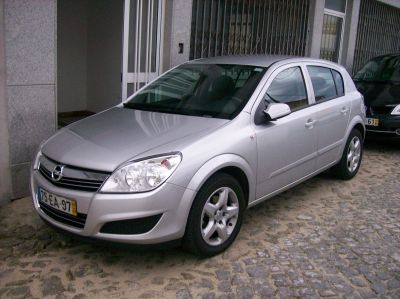
| Production: | 2007-2009 |
|---|---|
| Model Year: | 2007 |
| Length: | 4249 mm167.3 in |
| Width: | 2033 mm80.0 in |
| Height: | 1460-1467 mm57.5-57.8 in |
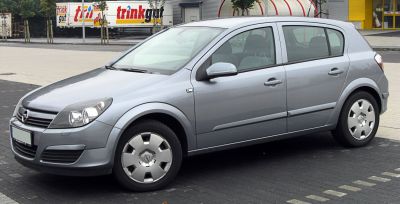
| Production: | 2004-2006 |
|---|---|
| Model Year: | 2004 |
| Length: | 4249 mm167.3 in |
| Width: | 2033 mm80.0 in |
| Height: | 1467 mm57.8 in |
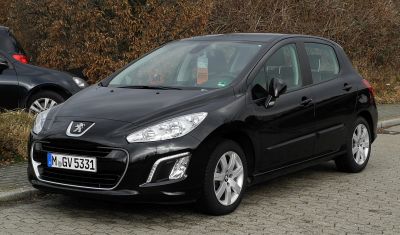
| Production: | 2011-2013 |
|---|---|
| Model Year: | 2011 |
| Length: | 4276 mm168.3 in |
| Width: | 2038 mm80.2 in |
| Height: | 1498 mm59.0 in |
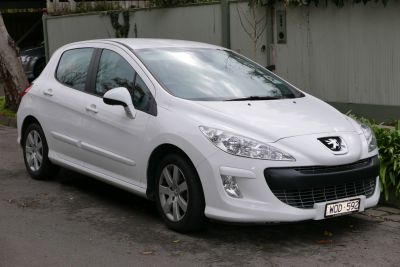
| Production: | 2007-2010 |
|---|---|
| Model Year: | 2007 |
| Length: | 4276 mm168.3 in |
| Width: | 2038 mm80.2 in |
| Height: | 1498 mm59.0 in |
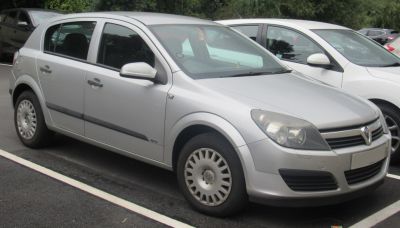
| Production: | 2004-2009 |
|---|---|
| Model Year: | 2004 |
| Length: | 4249 mm167.3 in |
| Width: | 2033 mm80.0 in |
| Height: | 1467 mm57.8 in |

| Production: | 2011-2016 |
|---|---|
| Model Year: | 2012 |
| Length: | 4278 mm168.4 in |
| Width: | 2021 mm79.6 in |
| Height: | 1486 mm58.5 in |

| Production: | 2004-2007 |
|---|---|
| Model Year: | 2004 |
| Length: | 4227 mm166.4 in |
| Width: | 1933 mm76.1 in |
| Height: | 1430 mm56.3 in |

| Production: | 2008-2012 |
|---|---|
| Model Year: | 2008 |
| Length: | 4295 mm169.1 in |
| Width: | 2037 mm80.2 in |
| Height: | 1471-1491 mm57.9-58.7 in |
